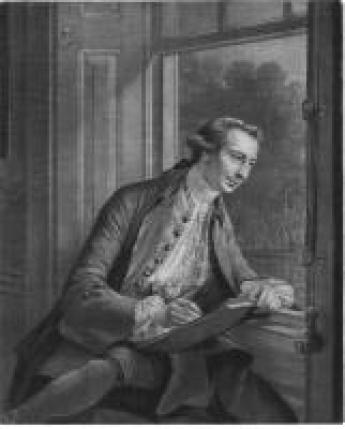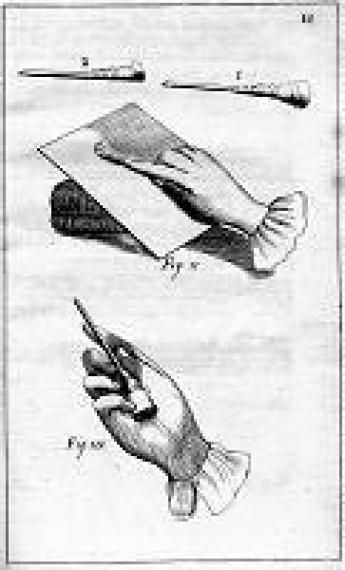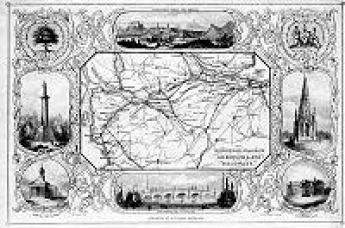Antiquarian Booksellers' Association Ash Rare Books
British Map Engravers: A Dictionary of Engravers, Lithographers and Their Principal Employers to 1850

A New Publication by Laurence Worms and Ashley Baynton-Williams
"Essential for all serious libraries, all serious map and print collectors, all serious scholars of the printed image in the British Isles, and every map and print dealer".
The ultimate guide to the identification of British antique maps and their makers: An illustrated dictionary of over 1,500 members of the map trade in England, Ireland, Scotland and Wales, of British-born engravers working overseas and foreign engravers working in the British Isles, from the beginnings until the mid 19th century. Included are all the known engravers and lithographers, globemakers and retailers, the principal map sellers and publishers, key cartographers, makers of map-based games and puzzles, but also the remarkable lives of many artists, dealers and publishers, whose fates have been unknown so far.
Francis Dewing, for example, apprenticed in London in 1703, emigrated to North America and produced the earliest known American sea-chart in Boston in 1717. Or the Scot John Carmichael: Deaf and dumb from birth, he emigrated to Sydney in 1825 and became a successful engraver and important publisher. Today he is remembered as the first recorded person to use sign-language in Australia. John Rocque, on the other hand, came to England in search of religious liberty, and made one of the greatest of all London maps in 1746.
The role of women is a little known part of the trade. One of many careers uncovered for the first time by Laurence Worms and Ashley Baynton-Williams is that of the 18th century globemaker Elizabeth Cushee, previously unidentified and known only as E. Cushee.
Among the most exciting stories in this remarkable new dictionary is that of John Henry Banks, who made the extraordinary Balloon View of London in 1851, declared bankrupt at least four times and twice imprisoned for debt as he trailed his wife and numerous children all over London from address to address seeking solvency.
Over fifty of the people listed by Laurence Worms and Ashley Baynton-Williams spent time in prison, mainly for debt, but others for their politics. The great 17th century mapmaker John Seller was found guilty of high treason in 1662 and sentenced to a grisly execution, but somehow survived to end up as Hydrographer to the King. Another royal appointee, William Wynne Ryland, Engraver to the King, was hanged for forgery in 1783.
Map engravers’ skills in lettering and decoration meant that they were often employed to engrave banknotes. Garnet Terry became chief engraver to the Bank of England and frequently appeared as an expert witness in forgery trials, but others found themselves on the wrong side of the courtroom. Joseph Bye and Benjamin Smith were sentenced to death for uttering forged notes in 1817. Their previously untold story, discovered by Worms and Baynton-Williams, includes their capture during the Napoleonic Wars by a French privateer in 1810 when en route to take up work in Lisbon, imprisonment in France for four years, and a desperate time working as journeymen in Edinburgh.
The map engraver William Robert Gardner was a more successful criminal. “The Times” reported in 1829 that “extensive forgeries had lately been detected”. Gardner, aged about forty and of “a very prepossessing exterior and agreeable manners”, had maintained an opulent lifestyle. One day, he was last sighted at London Docks seeking passage to New York. His wife and three children were left behind, claiming to know nothing. He was never heard of again.
A monumental work, filled with remarkable stories and all relevant information about the map trade, illustrated with portraits, trade-cards and advertising ephemera. If you don’t find the information you are looking for in this dictionary, you won’t find it anywhere. Worms' and Baynton-Williams' book is worth reading, and an essential standard work for all dealers, scholars, and collectors.
Laurence Worms and Ashley Baynton-Williams: British Map Engravers: A Dictionary of Engravers, Lithographers and Their Principal Employers to 1850.
London : Rare Book Society, 2011. Royal 8vo (25cm). Approx. 750 pp. Numerous illustrations, apprentice charts, etc. Hardbound.
>>> Purchase the book
Lecture at the London Map Fair at the Royal Geographical Society, June 11-12, 2011
>>> London Map Fair
>>> More information



